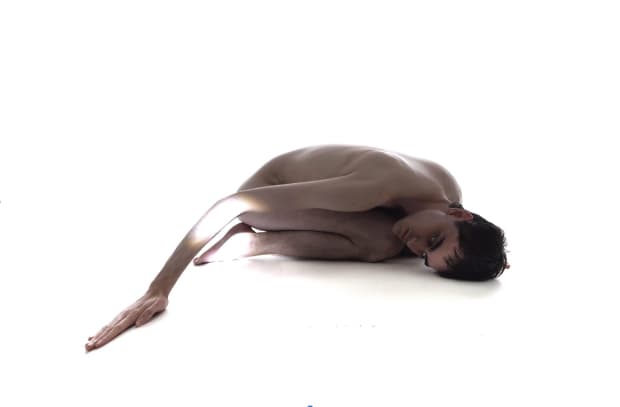-
The Exhibition
Enari Gallery is pleased to present Fabricated Love, a group exhibition featuring works by Emre Özakat, Andrei Nițu, and Tom Solty. The exhibition serves as a seminal platform, facilitating an erudite exploration of the intricate interplay between conventional artistic practices and the transformative dimensions engendered by the digital milieu.
Fabricated Love delves into a multitude of contrasts, including technological advancements and antiquated customs, surveillance and intimacy, authenticity, and simulation. The exhibition prompts visitors to reflect on the intricate ways in which digital environments influence our lives and how art functions as a medium through which these intricate conversations unfold.
The show seeks to disclose an ontological dialectic encompassing the transient harmonies between the digital metaverse and tradition, the ubiquitous and ephemeral nature of surveillance, and the dynamic relationship between reality and online imagery. While navigating in the exhibition, the canvases function as conduits for philosophical suggestions. These stimulating debates go beyond mere aesthetic admiration and encourage reflection on the complex relationships between technology, tradition, and the ever-changing nature of love in the age of digital interconnection. -
Featured Artists
-
 Emre Özakat, PARANOIA, 2020, Gerrit Rietveld Academie
Emre Özakat, PARANOIA, 2020, Gerrit Rietveld Academie -
'I am drawn to the daily inundation of online images. I am interested in the ephemeral nature of these images, to the way in which they seem to multiply and sensationalise, while desensitising at the same time. I’ve always been fascinated by the uncanny corners of the internet. I approach my own practice through a lens of the existential implications of present-day media. Images which become low resolution and degrade through redistribution and digital compression as they circulate become the property of the masses and construct anonymous global networks. These images have an ephemeral nature, always in motion. The temporality is momentarily suspended through painting, fixed in its state of compression and contortion. It is a replica of a replica, a bastard of its original image.'
-
BIOGRAPHY
EMRE ÖZAKAT -
 Andrei Nițu, studio portrait, courtesy of the artist.
Andrei Nițu, studio portrait, courtesy of the artist. -
'Rather than providing explicit illustrations or didactic translations of ideas, I prefer the power of ambiguous symbolism to reference the underlying motives and psychological complexities that drive human behavior. My body of work is characterized by a schizophrenic catalog of symbols, which when connected create a multifaceted narrative.'
-
 Andrei Nițu, Fingerprint, 2024, acrylic and oil on canvas, 150 x 100 x 4.5 cm.
Andrei Nițu, Fingerprint, 2024, acrylic and oil on canvas, 150 x 100 x 4.5 cm. -
-
Biography
Andrei NițuAndrei Nițu's work serves as a tool to validate his own identity and propagate his ideology. He creates paintings with a manipulative approach, aiming to briefly influence the viewer's emotions. His fascination with the human psyche and motivations arises from the contrast between his own narcissistic tendencies and his country's totalitarian history, where leaders feigned altruism to gain influence. As an individual diagnosed with Narcissistic Personality Disorder, Nițu uses his art to explore the link between trauma, identity, and ego. He delves deep into psychology, self-analysis, and artistic principles, dissecting the paradoxes that define individuals and society.
Born in Bucharest, Romania in 2000, Nițu lives and works in the Netherlands. Nițu graduated in 2023 from the Royal Academy of Arts KABK, Den Haag. Following his graduation, Nițu has participated in numerous exhibitions and projects, namely, Best of Graduates 23' by Galerie Ron Mandos and Art Antwerpen 23' with Stigter Van Doesburg.
-
 Tom Solty, studio portrait, courtesy of the artist.
Tom Solty, studio portrait, courtesy of the artist. -
 Tom Solty, I will miss you when you are gone II, 2023, oil on canvas, 170 x 130cm.
Tom Solty, I will miss you when you are gone II, 2023, oil on canvas, 170 x 130cm. -
Biography
Tom SoltyBorn in Aachen, Germany, in 1992, Solty lives and works between Lisbon and Berlin. He studied Illustration at the Academy of Fine Arts in Maastricht, Netherlands, from 2012 to 2015. In 2018, Solty moved to Lisbon, Portugal, to explore the field of contemporary painting and succeeded in his Master of Painting at the Faculty of Fine Arts in Lisbon in 2021 before beginning his Ph.D. program in Painting in 2022.
-
-
For enquiries into the featured artworks and artists of Fabricated Love, please click on the button below:
Emre Özakat, Andrei Nițu, Tom Solty, 27 Jan – 09 Mar
Stay in touch with Enari
Joining the Enari newsletter is the best way to stay informed about our latest shows, fairs, and artists' news
* denotes required fields
We will process the personal data you have supplied to communicate with you in accordance with our Privacy Policy. You can unsubscribe or change your preferences at any time by clicking the link in our emails.






